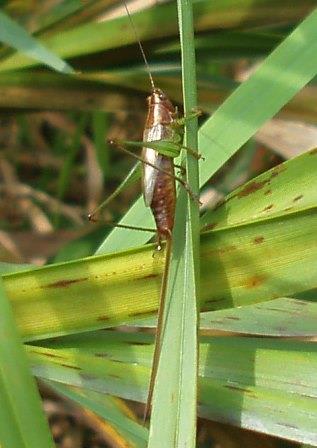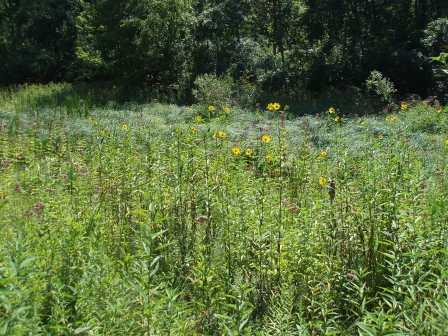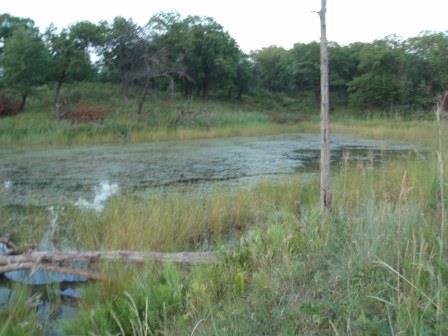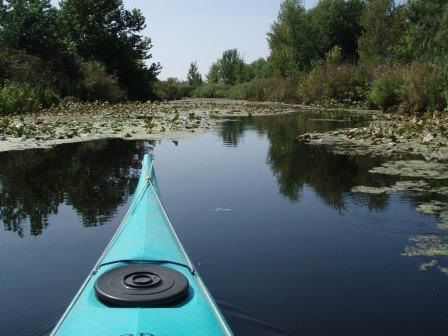by Carl Strang
A continuing theme in my regional survey of singing insects is the paucity of wetland species. The only one that is present in good numbers in many wetlands is the black-legged meadow katydid. Other species common in wetlands are habitat generalists such as the Carolina ground cricket and short-winged meadow katydid, which don’t truly count as wetland insects. One clear cause of this problem is the loss of high quality habitat to four invasive plant species (purple loosestrife, reed canary grass, common reed, and cattails). All four are capable of completely taking over a wetland, and examples of this can be found for all four. Small numbers of the singing insects mentioned above can be found in such places, but not the other wetland insect species.

This female long-tailed meadow katydid was a rare wetland species holdout in a small pocket of surviving diverse wetland plants surrounded by cattails, reed canary grass and common reed at Waterfall Glen Forest Preserve in DuPage County, Illinois.
On the other hand, there are some good wetlands out there. Many are small, and this along with their isolation may limit them.

This beautiful little fen at Richard Young Forest Preserve in Kendall County is completely surrounded by woodland.

Many of the interdune swales at Miller Woods in the Indiana Dunes National Lakeshore have been taken over by the common reed. This one was an exception, but I found only black-legs there.

This fen-like wetland at Bluff Creek in Wisconsin’s Kettle Moraine State Forest looks very good. I will want to check it earlier in the season next year.
Still, I have not given up hope. I found a third good population of mole crickets this year, in a swale at Miller Woods.

Mole cricket tunnels look like miniature mole tunnels. They occur around wetland edges, and occasionally have holes to let out the males’ deep chirping calls, and to provide access for attracted females.
I also found melodious ground crickets at two new sites in Berrien County, Michigan. Though I did not find dusky-faced or delicate meadow katydids at the Indiana Dunes’ Great Marsh this year, I felt curiously encouraged by this.

Both species were there last year, but with the water level higher in 2013, the vegetation was arranged differently and I did not find them in the same place.
Maybe the populations of many wetland species took a hit in last year’s drought, and were thinly dispersed in the expanded wet areas of 2013. This is, after all, the first year in which I have surveyed many of these sites. If they need a couple years to recover from the drought, maybe I will find the missing species in the future. Still, how to account for the lack of nimble meadow katydids? This species I have yet to find, anywhere. In the heart of the singing insect season I took my sea kayak into an area where they historically were known.

The channels at the south end of Lake Maxinkuckee in Marshall County, Indiana, have become heavily invaded by purple loosestrife.

Even the patches of emergent water-dwelling knotweeds, a habitat specifically mentioned in some sources as good for nimble meadow katydids, had none as far as I could tell.
So the bottom line is a disappointing season for wetland species, with a few positive points and hope in the possibility that populations are at a low point from which they will recover.















